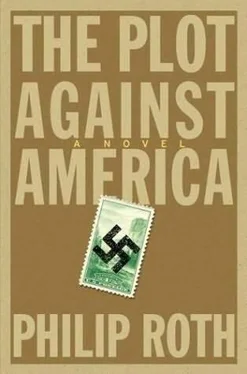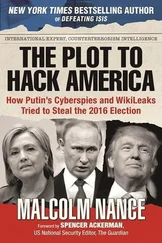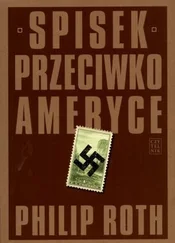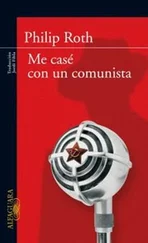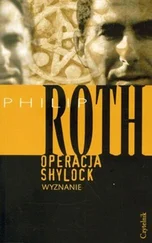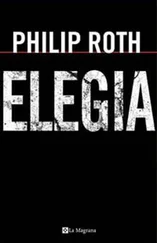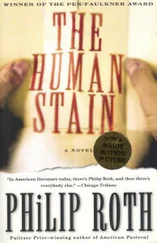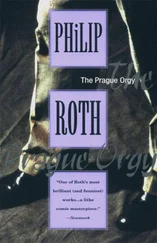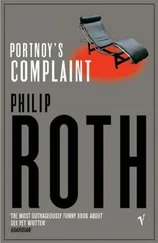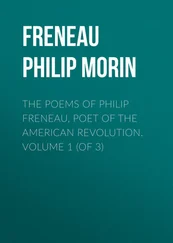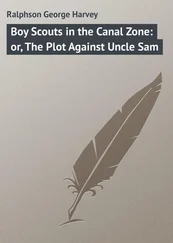Out in the streets, those listening together around the loudspeakers take up the mayor's cry, and soon their chant is cascading eerily across the entire city-"Where is Lind -bergh? Where is Lind -bergh?"-while inside the synagogue the mayor repeats and repeats his four irate syllables, angrily banging the pulpit not like an orator theatrically emphasizing a point but like an outraged citizen demanding the truth. "Where is Lindbergh?" This is the snarling peroration with which the red-faced La Guardia readies the assembled mourners for the climactic appearance of Franklin D. Roosevelt, who stuns even his closest political cronies (Hopkins, Morgenthau, Farley, Berle, Baruch, all sitting behatted only feet from the coffin of the martyred candidate, whose brand of megalomania was never to the taste of the White House inner circle, however useful a mouthpiece he may have been to their boss) by ordaining as Winchell's successor the cunning, contemptuous, short-tempered, bullheaded, roly-poly politico standing five feet two inches tall and known affectionately to his devoted constituents as the Little Flower. From the pulpit of Temple Emanu-El, the nominal head of the Democratic Party pledges his support to New York's Republican mayor as a "national unity" candidate to oppose Lindbergh's quest for a second term in 1944.
Wednesday, October 7, 1942
Piloted by President Lindbergh, the Spirit of St. Louis departs from Long Island in the morning, lifting off from the runway that served as the point of embarkation for the transatlantic solo flight of May 20, 1927. With no protective escort, the plane speeds through a cloudless autumn sky across New Jersey, Pennsylvania, Ohio, and down to Kentucky. Only an hour before he is to set down in the midday sunshine at the Louisville commercial airport is the White House notified by the president of his destination. His timing allows just enough notice for Louisville mayor Wilson Wyatt and the city and its citizens to prepare for the president's arrival. A mechanic is at the ready on the ground to check over the plane and tune and equip it for the return flight.
Of Louisville's 320, 000 residents, the police estimate that at least a third have made the five-mile trek out from the city and are already packing the fields and the roads adjacent to Bowman Field when the president lands and smoothly taxies his plane to a platform where a microphone has been hooked up for him to address the vast crowd. When finally the great din of their greeting begins to diminish and his voice can be heard, the president makes no mention of Walter Winchell, does not allude to the assassination two days earlier or to the funeral the day before or to the speech made by Mayor La Guardia on the occasion of his anointment as Winchell's successor by Franklin Roosevelt in a New York synagogue. He does not have to. That La Guardia is, like Winchell before him, no more than a stalking horse for FDR in his dictatorial quest for an unprecedented third presidential term, and that those behind the "vicious La Guardia libel of our president" are the very same people who would have forced America to go to war in 1940, has already been colorfully explained to the nation by Vice President Wheeler in an impromptu Washington speech before the American Legion convention the previous evening.
All that the president says to the crowd is "Our country is at peace. Our people are at work. Our children are at school. I flew down here to remind you of that. Now I'm going back to Washington so as to keep things that way." An innocuous enough string of sentences, but to these tens of thousands of Kentuckians who've been the subject of national interest for two full days it is as though he has announced the end of all hardship on earth. Pandemonium once again, while the president, as laconic as ever and bidding farewell with just a single wave, squeezes his lanky frame back into the plane's cockpit, and from the airstrip a smiling mechanic signals with his wrench that everything's checked out and ready to go. The engine turns, the Lone Eagle waves a final goodbye, and with a rush and a roar the Spirit of St. Louis lifts free of Daniel Boone's gorgeous wilderness state, inch by inch, foot by foot, until at last (like the barnstorming, skydiving, wing-walking stunt pilot he'd been as a kid, flying low over the farming towns of the West-and to the delight of the delirious crowd) Lindy clears by no more than a hairsbreadth the telephone wires strung from the poles along Route 58. Rising steadily into the stream of a warm, gentle tailwind, the most famous small plane in aviation history-the modern-day counterpart of Columbus's Santa María and the Pilgrims' May-flower -disappears eastward, never to be seen again.
Thursday, October 8, 1942
Ground searches of the regular flight path between Louisville and Washington yield no evidence of wreckage despite the perfect fall weather that makes it possible for local search parties to penetrate deep into the rugged mountains of West Virginia and to range over the harvested farmlands of Maryland and for state authorities to dispatch police launches up and down the Maryland and Delaware coastlines throughout the daylight hours. In the afternoon the Army, Coast Guard, and Navy join the search, along with hundreds of men and boys in every county from every state east of the Mississippi who have volunteered to assist the National Guard units called out by the state governors. Yet by dinnertime in Washington there is still no reported sighting of the plane or its wreckage, and so at eight P.M. the cabinet is summoned to an emergency meeting at the vice president's home. There Burton K. Wheeler announces that, after consulting with the First Lady and the majority leaders of the House and the Senate and the chief justice of the Supreme Court, he has deemed it in the country's best interest to assume the duties of acting president in accordance with Article II, Section 1 of the U.S. Constitution.
In dozens of newspapers, the evening headline, printed in the boldest, blackest type seen on America's front pages since the stock market crash of 1929 (and intended to shame Fiorello La Guardia), somberly reads: WHERE IS LINDBERGH?
Friday, October 9, 1942
By the time Americans awaken to begin their day, martial law has been imposed throughout the continental United States and in the territories and possessions. At noon Acting President Wheeler travels under military guard to the Capitol, where he announces to an emergency closed-door session of Congress that the FBI has received information establishing that the president has been kidnapped and is being held by parties unknown at a location somewhere in North America. The acting president assures the Congress that all steps are being taken to secure the president's release and to bring the perpetrators of the crime to justice. In the meantime the country's borders with Canada and Mexico have been sealed, airports and seaports have been shut down, and law and order, says the acting president, is to be maintained in the District of Columbia by the U.S. armed forces and elsewhere by the National Guard in cooperation with the FBI and local police authorities.
AGAIN!
So reads the one-word headline carried on every Hearst paper in the country and printed above pictures of the little Lindbergh baby, last photographed alive in 1932, only days before his kidnapping at the age of twenty months.
Saturday, October 10, 1942
German state radio announces that the kidnapping of Charles A. Lindbergh, thirty-third president of the United States and signatory to America's historic Iceland Understanding with the Third Reich, has been discovered to have been perpetrated by a conspiracy of "Jewish interests." Top-secret Wehrmacht intelligence data are cited to corroborate initial reports from the Ministry of State that the plot was masterminded by the warmonger Roosevelt-in collusion with his Jewish Treasury secretary, Morgenthau, his Jewish Supreme Court justice, Frankfurter, and the Jewish investment banker Baruch-and that it is being financed by the international Jewish usurers Warburg and Rothschild and carried out under the command of Roosevelt's mongrel henchman, the half-Jew gangster La Guardia, mayor of Jewish New York City, along with the powerful Jewish governor of New York State, the financier Lehman, in order to return Roosevelt to the White House and launch of an all-out Jewish war against the non-Jewish world. The intelligence data, which have been turned over to the FBI by the German embassy in Washington, allege that the assassination of Walter Winchell was planned and executed by the same cabal of Roosevelt Jews-and responsibility for the crime predictably attributed by them to Americans of German descent-so as to foster the vicious "Where is Lindbergh?" campaign, which in turn moved the president to take to the air and fly to the scene of the assassination to reassure the citizens of Louisville, Kentucky, who were justifiably fearful of organized Jewish retaliation. But there-according to the Wehrmacht reports-as the president addressed the crowd, an airport mechanic bribed by the Jewish conspiracy (who has himself vanished and is believed to have been murdered by order of La Guardia) rendered the aircraft's radio inoperative. No sooner had the president taken off for Washington than he was unable to make contact with the ground or with other aircraft and had no choice but to capitulate when the Spirit of St. Louis was corralled by highflying British fighter planes, which forced him to deviate from his course and to land, some hours later, at an airstrip secretly maintained by international Jewish interests across the Canadian border from Lehman's state of New York.
Читать дальше
